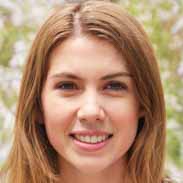Chapter 12 Study Guide~DNA – Flashcards
Unlock all answers in this set
Unlock answersquestion
Which bacteria killed the mice in Griffith's transformation experiment?
answer
Harmless bacteria from the R-strain and heat killed S-bacteria
question
Why did Griffith call the process he observes transformation?
answer
The harmless bacteria form of bacteria had been permanently transformed into another disease causing form
question
What did Avery conclude caused transformation?
answer
DNA
question
What do bacteriophages infect?
answer
Bacteria
question
Why did Hershey and Chase label the viral DNA with radioactive phosphorous and not radioactive sulfur?
answer
DNA doesn't contain sulfur
question
What stores information in a cell?
answer
The DNA that makes up your genes
question
What happens to the genetic information when a piece of DNA is missing?
answer
There's a loss of genetic info from one generation to the next
question
In what way is DNA like a book?
answer
Has instructions, can be copied, and passed on
question
Figure 12-2 shows what type of molecule? (DNA)
answer
DNA molecule
question
What makes up a nucleotide in a DNA molecule?
answer
Phosphate, deoxyribose sugar, and nitrogenous base
question
Why does DNA make a good molecule for storing information?
answer
Bases can be combined in different ways
question
How did Rosalind Franklin contribute to the understanding of DNA?
answer
X-rays of DNA molecule
question
Which scientist(s) figured out that the shape of a DNA molecule if a double helix?
answer
Watson and Crick
question
What forms a base pair with thymine?
answer
Adenine
question
What did Watson and Crick discover about the two strands in DNA? (Compared to each other)
answer
They were complementary and they ran in opposite directions
question
DNA replication results in two DNA molecules that have what properties?
answer
One new strand, one original strand
question
During DNA replication, a DNA strand that has the bases CTAGGT produces a complementary strand with what bases?
answer
GATCCA
question
Figure 12-5: Opposite from thymine?
answer
Adenine
question
Figure 12-5: What is adding base pairs to the strand?
answer
DNA polymerase
question
Where is DNA formed in eukaryotes?
answer
Nucleus
question
In both prokaryotes and eukaryotes, how many copies of the chromosome are left after replication?
answer
2 copies
question
What makes up a chromosome?
answer
DNA, histone proteins, nucleosomes, and nucleotides
question
Watson and Crick discovered that what type of bonds hold base pairs together at the center of a strand?
answer
Hydrogen bond
question
How many copies does the replication of a DNA molecule result in?
answer
2 copies
question
If a DNA strand had the sequence TACGTT what would the complementary strand be?
answer
ATGCAA
question
In eukaryotes, DNA replication proceeds in how many directions along the DNA molecule?
answer
2 directions
question
When scientists say that DNA transmits information, what does that mean?
answer
It passes info to the next generation
question
Watson and Crick used the image of DNA taken by what scientist in their work to figure out the structure of DNA?
answer
Rosalind Franklin
question
What would the matching strand to the one in Figure 12-7, reading from the bottom up, be? (AGCT)
answer
AGCT
question
What are the tips of chromosomes called?
answer
Telomeres
question
What are the three main components in nucleotides? Be able to identify them in a diagram.
answer
Deoxyribose, phosphate group, nitrogen base
question
During DNA replication, what two processes must occur before the two strands of a DNA molecule can separate?
answer
Break apart hydrogen bonds, unwind molecule
question
In prokaryotes and eukaryotes, when does DNA replication happen?
answer
In the S-phase before the cell divides



